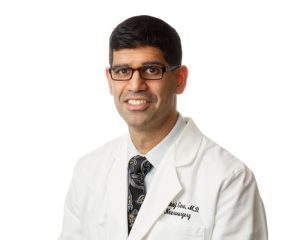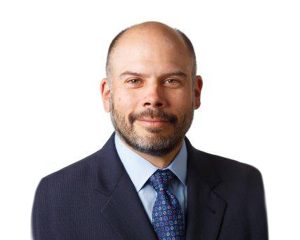The Oregon Acoustic Neuroma Center at The Oregon Clinic
- About Us
- Team
- Patient Education
- Case Studies
The mission of the OANC is to provide the highest quality, comprehensive multimodality treatment for patients with acoustic neuromas and other skull-based tumors. Our goal is to preserve hearing and facial nerves whenever possible by using the most up-to-date and comprehensive treatments available.
Our physicians are Oregon’s experts in successfully addressing acoustic neuroma, with experience in over 600 cases. All cases are reviewed by Medical Directors in the areas of neuro-otology, neurosurgery and radiation oncology. Our multimodality approach allows us to provide coordinated, comprehensive treatment resulting in improved outcomes and more immediate care.
We have a fast-track option for patients from outside of the Portland area, allowing for appointments with providers and procedures to be scheduled together. Please let our scheduler know if you are from outside of the Portland area.
The physicians with the OANC have the most extensive surgical and radiosurgical experience in the treatment of acoustic neuroma in Oregon and are one of the most experienced teams in the Pacific Northwest. With almost 400 surgical cases and 300 radiosurgery cases we are proud to offer comprehensive multi-modality treatment. We have extensive experience with all surgical approaches, including hearing preservation surgery and utilize the Gamma Knife Perfexion for radiosurgical treatment.
Acoustic neuromas (also known as vestibular schwannomas) are non-cancerous tumors that arise from the nerve between the brain and inner ear. This nerve is responsible for hearing and balance control. Acoustic neuromas are typically slow-growing tumors that over time displace the surrounding tissue.
Symptoms can include tinnitus (ringing in the ear), hearing loss on one side, and balance difficulties. Larger tumors can cause facial numbness, facial weakness, and headaches. Very large tumors can cause severe pressure on the brainstem and cerebellum and can be life-threatening.
Treatment options include observation (for small tumors), radiosurgery and surgical resection. Treatment is determined by symptoms, tumor size, patient age, and health.
There are three surgical approaches. The middle fossa approach is used for small tumors where hearing preservation is the goal. The retrosigmoid approach is also used for hearing preservation and for larger tumors. The translabyrinthine approach is utilized for larger tumors where hearing is already compromised.
Each case is carefully reviewed and the best treatment options discussed with the patient and their family. Our goal is to achieve the best outcome for each patient’s unique circumstance.
If you have been diagnosed with an acoustic neuroma and are seeking treatment, please call 503-935-8541. If you have not been diagnosed but are concerned because your symptoms could indicate an acoustic neuroma, please contact your primary care physician for preliminary testing.
Case 1
A 42-year-old woman came into our clinic complaining of very mild right-sided hearing loss. Her MRI demonstrated an 8 mm right-sided acoustic neuroma. The treatment that was determined to be appropriate was surgery. We removed her tumor via a right middle fossa approach.
Outcome:
The patient had an excellent clinical outcome with preservation of both right-sided hearing and facial nerve function.
Case 2
A 30-year-old man came into our clinic complaining of headaches and problems with balance. His MRI demonstrated a 4.5 cm left-sided acoustic neuroma. The treatment that was determined to be appropriate for him was surgery. He underwent a retrosigmoid craniotomy for resection of the tumor. His postoperative MRI demonstrated no residual tumor.
Outcome:
The patient is doing very well with full preservation of his facial nerve function after surgery.
Case 3
A 56-year-old woman came into our clinic with dizziness and hearing loss. Her MRI demonstrated a 3-cm left-sided acoustic neuroma. The treatment determined to be appropriate for her was surgery. She underwent a left-sided translabyrinthine approach. Her postoperative MRI demonstrated total resection of the tumor. The bright area (*) is fat packing use to fill approach site.
Outcome:
The patient is doing very well with full preservation of her facial nerve function after surgery.




